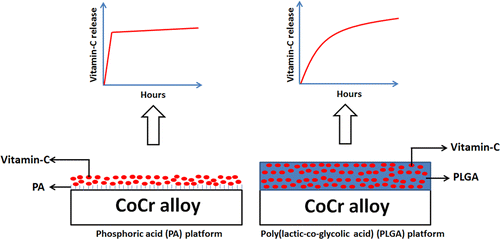Coating stents with vitamin C could reduce clotting risks

Every year, more than 1 million people in the U.S. who have suffered heart attacks or chest pain from blocked arteries have little mesh tubes called stents inserted into their blood vessels to prop them open. The procedure has saved many lives, but it still has potentially deadly downsides. Now scientists are reporting in the ACS journal Langmuir that coating stents with vitamin C could lower the implants' risks even further.
Eagappanath Thiruppathi and Gopinath Mani note that today's stents have come a long way since their first introduction. Today, they come coated with pharmaceuticals that can prevent the affected arteries from reclogging. The problem is that about 10,000 to 50,000 people who receive these drug-eluting stents develop something called "late stent thrombosis" (LST), a potentially fatal complication that happens when clots form and re-block the arteries. Although the drugs on the stents are helpful in most cases, they might be responsible for causing problems in others. The compounds prevent the growth of smooth muscle cells that can clog the affected area, but they can also prevent the growth of helpful endothelial cells that, in addition to the drugs, are critical to preventing LST. Thiruppathi and Mani set out to find a way to address this problem.
Previous research has shown that vitamin C could be a good alternative or addition to the drugs currently used to coat stents. The essential nutrient inhibits smooth muscle cells and encourages endothelial cells—just the traits the scientists were looking for. So they figured out a way to successfully coat a common stent material with vitamin C so that it would release the nutrient slowly over time. They concluded that this technique could be useful for making stents and other implantable medical devices safer.
More information: "Vitamin-C Delivery from CoCr alloy Surfaces Using Polymer-Free and Polymer-Based Platforms For Cardiovascular Stent Applications", Langmuir, Article ASAP. DOI: 10.1021/la501448h
Abstract
Antiproliferative drugs such as paclitaxel and sirolimus are delivered from stents to inhibit the growth of smooth muscle cells (SMCs) for preventing neointimal hyperplasia. However, these drugs delay the growth of endothelial cells (ECs) as well and cause late stent thrombosis. We recently demonstrated the use of Vitamin-C (l-ascorbic acid, l-AA) over paclitaxel and sirolimus for inhibiting SMCs growth and promoting EC growth simultaneously. In this study, we have investigated the delivery of l-AA from CoCr alloy surfaces for potential use in stents. A polymer-free phosphoric acid (PA) platform and a polymer-based poly(lactic-co-glycolic acid) (PLGA) platform were used for coating l-AA onto CoCr surfaces. For the PA platform, FTIR confirmed that the PA was coated on CoCr, while the AFM showed that the PA coating on the CoCr surface was homogeneous. The successful deposition of l-AA on PA-coated CoCr was also confirmed by FTIR. The uniform distribution of l-AA crystals on PA-coated CoCr was shown by SEM, optical profilometer, and AFM. The drug release studies showed that l-AA (276 μg/cm2) was burst released from the PA platform by 1 h. For the PLGA platform, SEM showed that the l-AA incorporated polymer films were smoothly and uniformly coated on CoCr. FTIR showed that l-AA was incorporated into the bulk of the PLGA film. DSC showed that the l-AA was present in an amorphous form and formed an intermolecular bonding interaction with PLGA. The drug release studies showed that l-AA was sustained released from the PLGA coated CoCr for up to 24 h. The SEM, FTIR, and DSC characterizations of samples collected post drug release shed light on the mechanism of l-AA release from PLGA coated CoCr. Thus, this study demonstrated the delivery of l-AA from biomaterial surfaces for potential applications in stents and other implantable medical devices.














